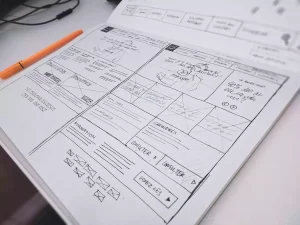Artificial Intelligence (AI) has become a vital part of many aspects of technology and has changed the way we interact with digital products and services. However, while AI-driven automation brings a host of benefits, there is a continuing need for human creativity in user interface (UI) design to ensure an excellent user experience. This article will explore the delicate balance between AI-driven automation and the creative input of human designers in UI design.
The Importance of Artificial Intelligence in UI Design
Artificial intelligence has evolved significantly in recent years, from simple product recommendations to complex chatbots and machine learning systems for user data analysis. These AI technologies have made our interaction with devices and applications smarter and more personalized. However, the automation driven by artificial intelligence raises the question of the role of human designers in this context.
One of the significant aspects of AI in UI design is the automation of basic processes. For example, artificial intelligence can automatically optimize the design of web pages by selecting colors, fonts, and structures that work best for user engagement. It can also personalize content based on individual user preferences and provide real-time recommendations. All of these contribute to improving the user experience.
Limitations of Artificial Intelligence Automation
However, there are limitations to what artificial intelligence can do in UI design. Automation may not have a complete understanding of context or be able to incorporate cultural or ethical aspects into design. Pure automation can also lead to uniformity in design, making products look and feel the same regardless of their purpose or target audience.
The Role of Web Designers
This is where the intervention of web designers becomes essential. Human designers can bring elements of creativity, empathy, and an understanding of context to enhance UI design. They can develop a design that is not only aesthetically appealing but also functional and relevant to users. Another important aspect of human designer intervention is considering ethics and diversity in design. Designers can ensure that user interfaces do not promote stereotypes or discrimination and can develop solutions that are accessible and useful for all user categories.
Balancing Automation with Human Creativity
To achieve quality UI design, it’s essential to find a balance between artificial intelligence automation and human creativity. One way to do this is to use artificial intelligence as a tool to support designers rather than replacing them entirely. For example, designers can use AI algorithms to generate design variants, which they can then adjust and adapt according to their needs and intentions.
Furthermore, establishing effective collaboration between designers and AI development teams is of paramount importance to this dynamic balance. This collaborative effort serves as a catalyst for creating AI tools that are finely attuned to the specific requirements of designers, empowering them with a heightened degree of influence over the design process.
Artificial intelligence and UI design are two powerful forces that can work together to provide excellent digital experiences. AI automation brings significant benefits, but it cannot completely replace human creativity and understanding. Striking the right balance between automation and human creativity is the key to developing user interfaces that are attractive, functional, and ethical.
It’s important to continue to explore this complex relationship and develop solutions that maximize the benefits of both approaches. Only through effective collaboration between artificial intelligence and human designers can we create user interfaces that truly meet user needs and remain relevant in an ever-changing world of technology.
Learn about Artificial Intelligence in Web Accessibility: Creating Inclusive Designs for All Users
Follow us on social media:
Instagram: https://www.instagram.com/securemenow/
Facebook: https://www.facebook.com/securmenow
We offer WEB AI and Web Design services. Contact us







